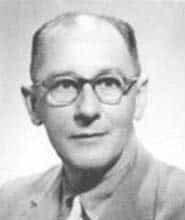The gymnastics coach with a shaky start, the heart of an adventurer, and an explosive coaching finish that had a positive effect on many young people as well as the adults he served with distinction.
Ralph Piper was one of only eight head coaches in the history of the University of Minnesota’s gymnastic program. He served as either assistant or head coach almost every year from 1929 to 1970. His teams won six Big Ten Championships, and he coached 34 Big Ten and six NCAA individual champions during his 41 year tenure at the university. His gypsy epithet formed early since he was in and out of school during his dawning school years, finally returning to high school and college, and eventually earning a Ph.D. in education. He worked briefly as an instructor, physical education trainer, and coach at Kansas State College before matriculating to the U. of Minnesotta. He then ascended from assistant professor to associate professor, eventually to full professor, and finally to professor emeritus of physical education. He left to serve as an officer in the U.S. Army from 1944 to 1946 where his duties took him to chief of the rehabilitation program at Walter Reed Army Hospital, working with soldiers who had lost limbs. He also took opportunities to travel and teach around the world as a Fulbright scholar. His scholarship included a Fulbright Lectureship at the University of Tehran, Iran, 1962-’63. During the 1956-’57 school year, Piper coached swimming at the University of Rangoon in Burma, and, during the 1966-’67 school year, he helped establish a graduate school of physical education at a university in Baghdad, Iraq. Piper retired in 1970, spending time in Florida and California enjoying his hobbies that included dancing. Ballroom & square dancing were his favorites. He continued to engage in various aspects of athletics as well as write several training manuals, physical education books and articles about dance during his retirement. He returned to Minnesota in 1998, and, despite the amputation of his legs due to circulation problems, he remained active. For his years of involvement in sports, gymnastics in particular, he was inducted into the National Gymnastics Hall of Fame, the National College Gymnastics Hall of Fame, the Minnesota Gopher Sports Hall of Fame, and this, the United States of America Gymnastic Hall of Fame.*
*Sources: Daily at U. of Minnesota, and The Link, a publication of the College of Education & Human Development at the U. of Minnesota.

